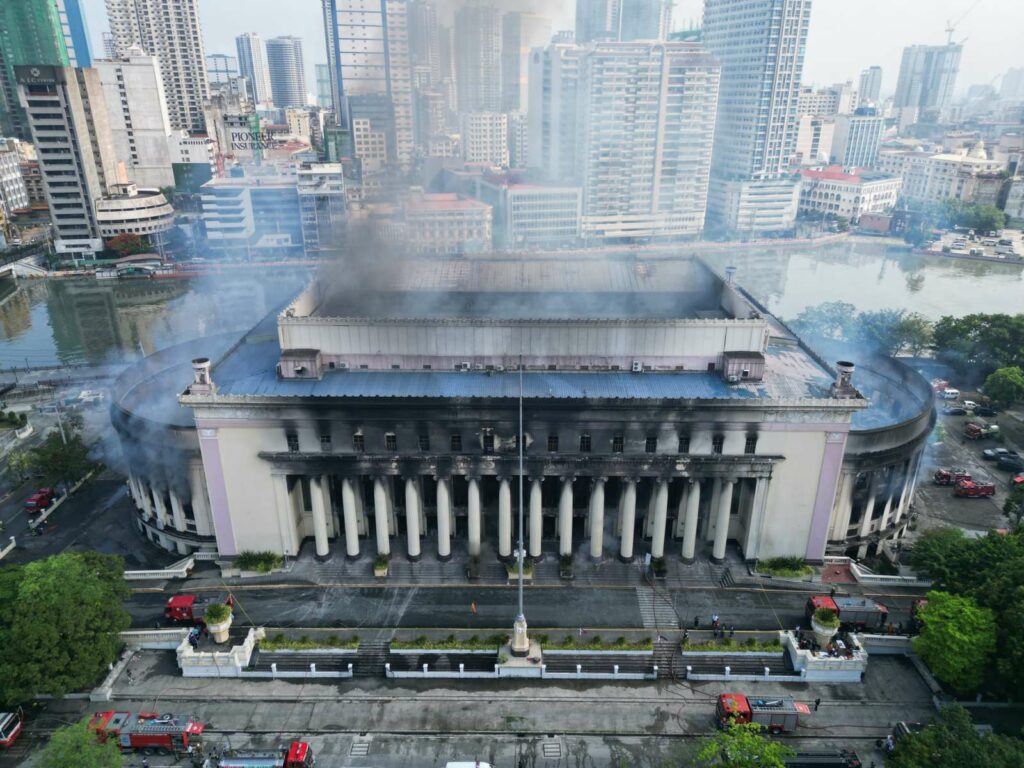Historic Manila Post Office Damaged by a Car Battery
One of the first reported cases of a historic building seriously damaged by a fire caused by a battery.
The Manila Central Post Office, a cherished historical landmark in the heart of the Philippine capital, fell victim to a devastating fire. This neo-Classical-style architectural masterpiece, which has stood since 1926, was all but destroyed by a fire that raged overnight, leaving behind only the shell of what was once a majestic building.

On the evening of May 21, 2023, a devastating fire erupted in the basement of the Manila Central Post Office. Despite valiant efforts by firefighters, the Postmaster General, Luis Carlos, reported that the building had sustained extensive damage, extending from the basement to the ground floor and reaching the fifth floor. While the structure remained standing, the extent of the damage was severe. Notably, the ceiling had collapsed during the blaze.
Fifteen individuals, predominantly firefighters, sustained injuries in the incident. The financial losses were estimated to be approximately 300 million Philippine pesos.
Following the tragic events, fire officials initiated an investigation to ascertain the cause of the fire that had reduced an iconic building to ruins. The Bureau of Fire Protection (BFP) released its findings, revealing an unexpected and surprising origin for the fire. The BFP report revealed that the fire had originated in the southern portion of the basement, where various materials were stored, including office supplies, thinners, paint cans, and car batteries.
According to the BFP report, the combustibility of the load contents and its enclosed configuration significantly contributed to the rapid accumulation of heat, leading to an accidental explosion of the car battery stored in the basement storage room. This unexpected cause of the fire deviates from the typical circumstances associated with such catastrophic events. The Bureau of Fire Protection officially ruled the incident as “purely accidental in nature“.
The BFP report stated that the self-discharge of the car battery resulted in a “thermal runaway,” causing an abrupt surge in heat and pressure that ultimately culminated in a devastating explosion. It is important to note that an automobile battery can potentially undergo thermal runaway even when not in use and stored due to various factors.
Battery Defects and Thermal Issues in Vehicles: Car batteries are composed of cells that can develop internal defects over time, even when not in use. These defects can result in internal short circuits or an increase in electrical resistance, leading to a rise in temperature.
Environmental Factors: The temperature and environmental conditions during storage can significantly impact the battery. Extreme temperatures, both hot and cold, can adversely affect the battery and potentially trigger thermal runaway.
Aging: Over time, car batteries undergo a natural aging process that can lead to internal deterioration. Even when not in use, internal stress accumulation can cause thermal problems.
Electronic Malfunctions: Malfunctions in the vehicle’s battery management systems or electronic components can also contribute to thermal issues. Even when the battery is deactivated, the management system may still interact with it, potentially causing errors or malfunctions that result in an increase in temperature.
Poor Maintenance and Storage: Inadequate battery storage practices, such as maintaining an insufficient charge level or neglecting cleanliness, can also lead to thermal problems.
It is crucial to acknowledge that while it is possible for a car battery to enter thermal runaway even when stationary and not in use, such occurrences are relatively uncommon. Nevertheless, implementing preventive measures, including proper battery storage, regular condition monitoring, and timely replacement of old or damaged batteries, is essential to minimise the risk of unexpected thermal issues.
On May 2025, two years after the devastating fire, the Philippine Postal Corporation (PHLPost) announced its intention to release the Terms of Reference (TOR) for the Detailed Architectural and Engineering Design (DAED) of the Central Post Office within the month. This formal commencement marks the restoration phase of the fire-damaged national landmark. So, nearly two years after a conflagration destroyed the neoclassical structure, the agency is proceeding with the procurement process for the DAED, characterised as “essential for the rehabilitation” of the historic building.





